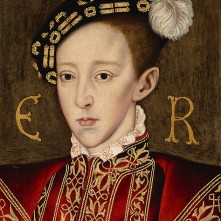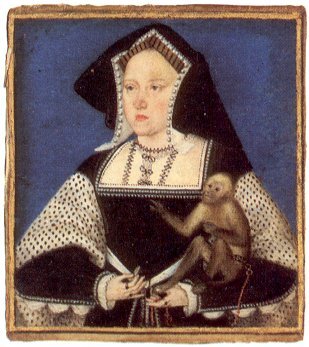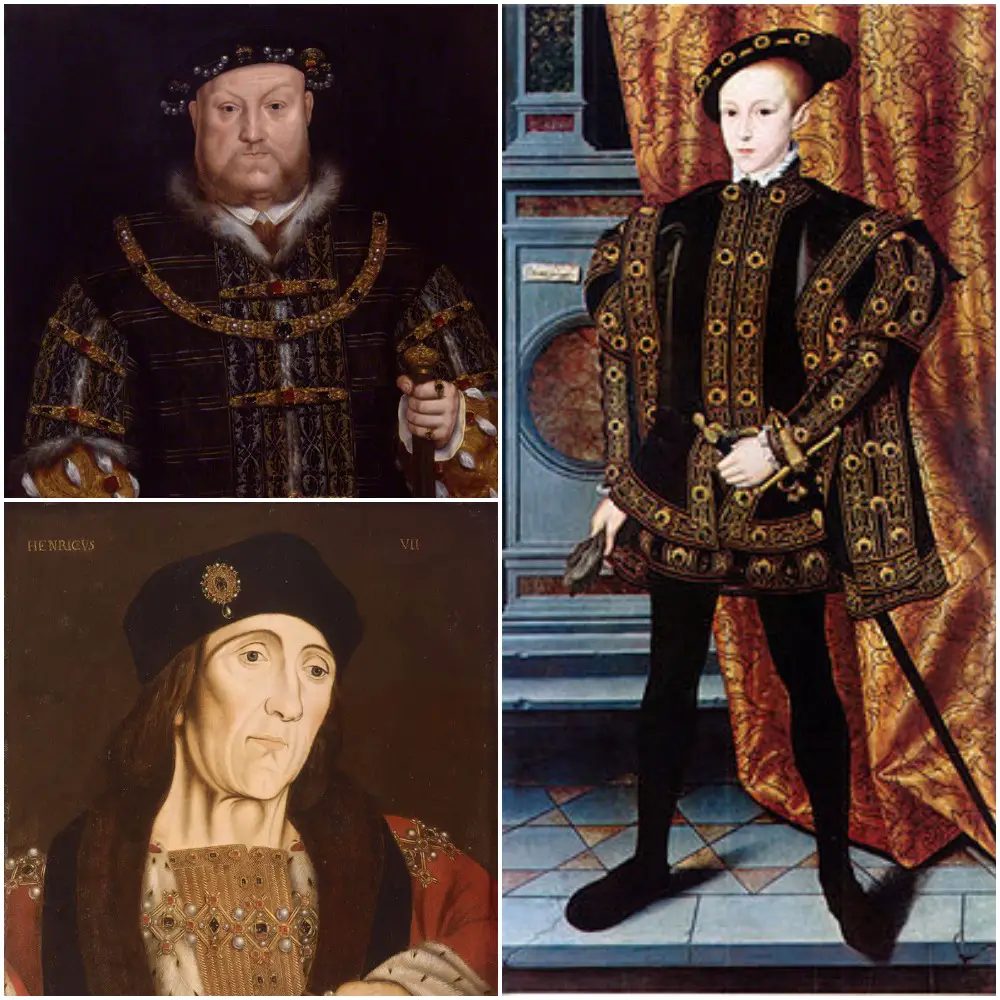30 January
1520 – Birth of Sir William More, member of Parliament, Protestant and son of Sir Christopher More, a powerful administrator in Henry VII's reign. More served Elizabeth I as Constable of Farnham Castle, Treasurer of the Lottery, Commissioner for Ecclesiastical Causes, Collector of the Loan, Chamberlain of the Exchequer, Master of Swans and Deputy Custos Rotulorum. He was also a commissioner on various commissions of oyer and terminer during her reign.
1531 – Death of Sir Robert Brudenell, Judge. He served Henry VII as King's Serjeant and Henry VIII as Chief Justice of the Common Pleas. He was buried at Deene church, Northamptonshire.
1554 - Rebel Thomas Wyatt the Younger and his men besieged Cooling Castle, owned by George Brooke, 9th Baron Cobham. Cobham claimed that he had fought valiantly against the rebels for seven hours before surrendering to them, but his biographer points out that his resistance was most probably a “pretence”.
1593 – Ippolito Aldobrandini was elected as Pope Clement VIII.
1606 – Execution of Robert Winter and three of his fellow conspirators, at St Paul's. He was hanged, drawn and quartered for his part in the Gunpowder Plot. His brother, Thomas, was executed the next day.
31 January
1510 - Queen Catherine of Aragon gave birth to a still-born daughter. Her confessor, Fray Diego, reported that the miscarriage/stillbirth occurred “without any other pain except that one knee pained her the night before.”
1547 – Thomas Wriothesley announced the death of Henry VIII to Parliament and Edward VI was proclaimed King.
1597 – Burial of Sir Hugh Cholmondeley, soldier, member of Parliament and Vice-President of the Council in the Marches of Wales, at Malpas Parish Church.
1606 – Executions of Gunpowder Plot conspirators Thomas Winter, Ambrose Rookwood, Robert Keyes, and Guy Fawkes at the Old Palace Yard, Westminster. All eight plotters had been found guilty of high treason in a trial at Westminster Hall on 27th January, and four of them had been executed on 30th January at St Paul's.
1 February
1506 – Birth of George Buchanan, Scottish historian, poet, playwright, humanist scholar and administrator, at Moss Farm in Killearn, Stirling, Scotland. Buchanan's works included two tragedies: “Baptistes” and “Jephthes”, his satire “Chamaeleon”, poems and books of verses, the treatise De jure Regni apud Scotos and his Rerum Scoticarum Historia, a history of Scotland.
1514 – Henry VIII granted the Dukedom of Suffolk to Charles Brandon, his future brother-in-law, and also made Thomas Howard, 2nd Duke of Norfolk, and Howard's son, also Thomas, the Earl of Surrey. Click here to read more.
1552 – Birth of Roger Cooke, alchemist and former assistant of Dr John Dee. He also appears to have been employed by Henry Percy, 9th Earl of Northumberland and a man known as the “Wizard Earl” to set up and run a still house in the Tower of London.
1554 - Queen Mary I gave a rousing speech at the Guildhall to rally Londoners to her cause and to oppose Wyatt’s rebellion. Click here to read all about it.
1555 – Burial of Jane Dudley, Duchess of Northumberland and wife of John Dudley, Duke of Northumberland, at Chelsea.
1562 – Death of Sir Richard Edgcumbe, courtier and politician. He was buried at Maker Church in Cornwall. Edgcumb served as a member of Parliament for Cornwall, High Sheriff of Devon (1543 and 1552), High Sheriff of Cornwall (1556) and Commissioner of Muster in Cornwall in 1557. In 1559, he was appointed as a Commissioner for the Royal Visitation of the Diocese of Exeter.
1587 - Elizabeth I called her secretary, William Davison, to her and asked him to bring her Mary, Queen of Scots's death warrant. She then signed it. Click here to read more on this.
2 February
1508 – Death of John Argentine, physician and Provost of King's College, Cambridge. He died at King's College and was buried there in the Chantry Chapel. Argentine was physician to Prince Arthur, son of Henry VII, and was also said to be the last man to attend on the Princes in the Tower.
1550 - Sir Francis Bryan, courtier, diplomat, poet and a man nicknamed “the Vicar of Hell”, died suddenly at Clonmel in Ireland. He had settled in Ireland after marrying Joan Butler, Dowager Countess of Ormond, and had travelled to Tipperary as Lord Justice “to check the incursions of the O’Carrolls”. His last words were allegedly “I pray you, let me be buried amongst the good fellows of Waterford (which were good drinkers)”. Bryan had served Henry VIII as a diplomat during the King's Great Matter, as Ambassador to Francis I in 1538, as Vice-Admiral in 1543 and as Ambassador to Charles V in 1543. He was made Knight-Banneret in 1547 for his role in the expedition against the Scots as commander of the horse and then appointed Lord Marshal in January 1549, leading Edward VI's forces in Ireland. In December of that year, he was appointed Lord Justice, but died less than two months later.
1575 – Death of John Parkhurst, Bishop of Norwich, probably at Ludham, Norfolk. He was buried in the nave of Norwich Cathedral. He had become Bishop of Norwich in 1560, after his return to England from exile in Mary I's reign. Parkhurst was Chaplain to Queen Catherine Parr, and also to Charles Brandon, Duke of Suffolk, and his wife, Katherine (née Willoughby).
1597 – Burial of James Burbage, joiner, actor and theatre builder, in Holywell Street, Shoreditch. Burbage acted in Leicester's Men and built “The Theatre”, a playhouse in Shoreditch, with his brother, Robert.
1597 – Death of James Morice, lawyer and member of Parliament. He hoped to be made Attorney-General, but he angered Elizabeth I in 1593 by causing a heated debate in Parliament when he claimed that church courts were acting against the “Magna Carta”. He was temporarily put under house arrest.
3 February
1478 – Birth of Edward Stafford, 3rd Duke of Buckingham at Brecon Castle. He was the eldest son of rebel Henry Stafford, 2nd Duke of Buckingham, and his wife, Katherine Woodville. Click here to read all about Stafford.
1537 – Execution of Thomas Fitzgerald, 10th Earl of Kildare (known as Silken Thomas), his five uncles and Sir John Burnell, at Tyburn. Thomas was hanged and beheaded, but his uncles and Burnell were hanged, drawn and quartered. He had renounced his allegiance to King Henry VIII back in June 1534, at St Mary's Abbey, Dublin, after his father's execution in London.
1554 – Thomas Wyatt the Younger and his rebels reached Southwark, London. By this time, however, Mary I had rallied her troops, and Wyatt found the city guarded and barricaded. He had to move on to Kingston, where he managed to enter London on 6th February.
1576 – Henry of Navarre, future Henry IV of France, escaped from Paris after being forced to live at the French court and convert to Catholicism, following the St Bartholomew's Day Massacre of August 1572.
1587 - The Privy Council met in William Cecil, Lord Burghley’s chambers at Greenwich and agreed to send Mary, Queen of Scots’ signed death warrant to Fotheringhay. Burghley appointed the Earls of Shrewsbury and Kent to direct the execution, and the council agreed to keep Elizabeth in the dark until the deed was done.
4 February
1495 – Anne of York, daughter of Edward IV and Elizabeth Woodville, married Thomas Howard, Earl of Surrey and the future 3rd Duke of Norfolk at Westminster Abbey.
1520 - Mary Boleyn, sister of Anne Boleyn, married William Carey, an Esquire of the Body and a relative and close friend of Henry VIII, in the Chapel Royal at Greenwich. The King attended the wedding.
1521 – Death of William Atwater, Bishop of Lincoln, at Wooburn in Buckinghamshire. Atwater also served as Vice-Chancellor of Oxford University, Dean of the Chapel Royal and Chancellor of Lincoln. He was buried in the Cathedral church of Lincoln, in the nave.
1523 – Death of Thomas Ruthall, Bishop of Durham, at Durham Place in London. He was buried at Westminster Abbey, in the St John's Chapel.
1541 – Burial of Sir William Brereton, Lord Justice of Ireland, at St Canice's Cathedral, Kilkenny, in the choir.
1555 - Burning of Protestant martyr, clergyman and Biblical editor, John Rogers, at Smithfield. Rogers was the first England Protestant burned in Mary I's reign after being condemned as a heretic. Rogers refused the chance of a last minute pardon if he recanted, and died bravely. His wife and eleven children, one being newborn and at the breast, attended his burning. Martyrologist John Foxe recorded that Rogers “constantly and cheerfully took his death with wonderful patience, in the defence and quarrel of the Gospel of Christ.”
1593 – Death of Sir Gilbert Gerard, member of Parliament and Judge. He was buried in Ashley Parish Church in Staffordshire. Gerard's offices included Attorney-General and Master of the Rolls. Gerard was involved in trying Elizabeth I's secretary William Davison, in 1587 after he had presented the death warrant of Mary, Queen of Scots before the Queen's council, and also the Earl of Arundel in 1589.
5 February
1537 - Birth of diplomat Sir Henry Brooke, son of George Brooke, 9th Baron Cobham, and his wife Anne Bray. Anne Bray was a lady in waiting to Anne Boleyn, and there is controversy over whether she was the "Nan Cobham" who was one of the Queen's accusers in 1536. In Elizabeth I's reign, Brooke was made a gentleman pensioner and carried out embassies to Spain, the Low Countries and France for her. In October 1579, Elizabeth appointed him as her resident ambassador in France, until he was replaced by Sir Edward Stafford in 1583.
1556 – Treaty of Vaucelles between Philip II of Spain and Henry II of France. By the terms of this treaty, Henry II had to relinquish Franche-Comté to Philip, but the treaty was quickly broken.
1557 – Death of Sir William Portman, Judge and Lord Chief Justice of England and Wales from 1555. He was buried at St Dunstan-in-the-West, Fleet Street, London.
1576 – Henry of Navarre, the future Henry IV of France, abjured Catholicism at Tours, rejoining the Protestant forces, following his escape from Paris on 3rd February.
1605 – Death of Sir Edward Stafford, son of Sir William Stafford (Mary Boleyn's second husband) and his second wife Dorothy Stafford. Edward was an MP and diplomat, and there is controversy over his "spying" activities during the Armada and exactly how much information he passed to Mendoza. He was buried in St Margaret's, Westminster.








Leave a Reply